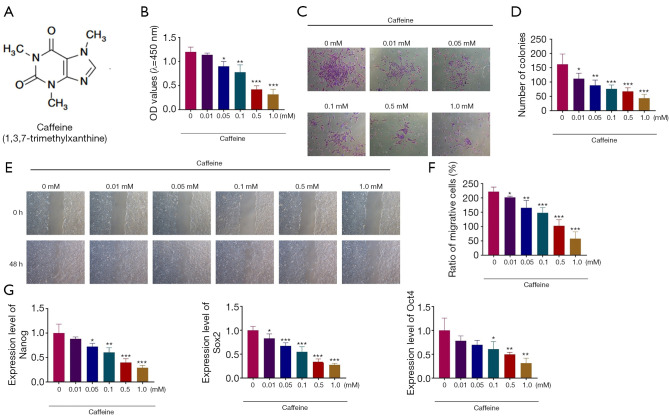Figure 1.
The inhibitory effects of caffeine on the viability, proliferation, migration, and pluripotency of BMSCs. (A) Chemical structures of caffeine. (B) The CCK-8 assay was used to assess the cell viability of BMSCs after treatment with caffeine at 0.01, 0.05, 0.1, 0.5, and 1.0 mM for 48 h. (C) The colony formation assay was performed to determine the proliferative ability of BMSCs treated with 0.01, 0.05, 0.1, 0.5, and 1.0 mM caffeine (100×). (D) The statistical results of the colony formation assay. (E) The migration of BMSCs in the presence of caffeine was determined by the wound healing assay (100×). (F) Quantitative analysis of the wound healing assay. (G) QRT-PCR analysis was applied to measure the mRNA expression levels of pluripotency-associated transcription factors, including Nanog, Sox2 and Oct4. n=3. *, P<0.05; **, P<0.01; ***, P<0.001. BMSCs, bone marrow mesenchymal stem cells.

